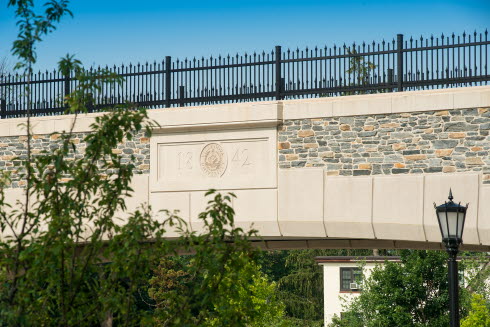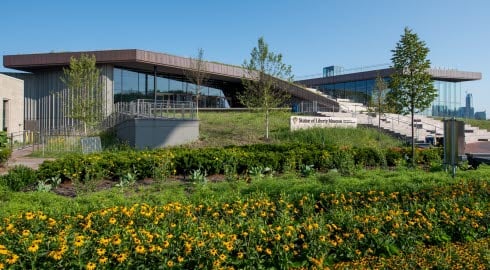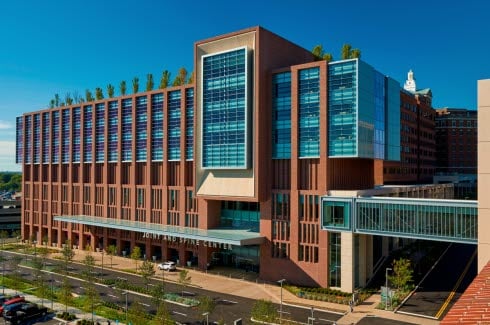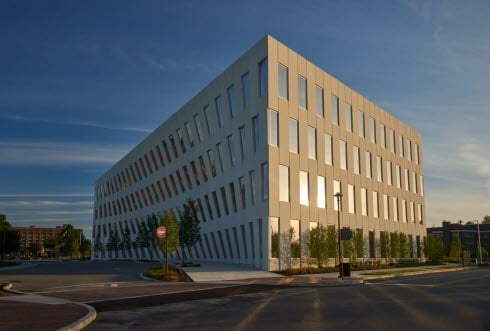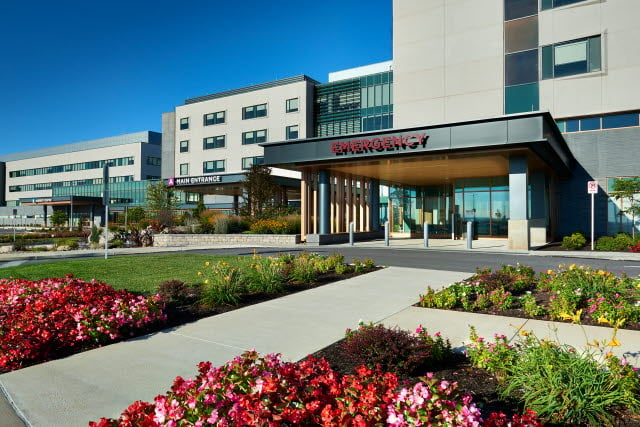Precast Concrete Basics

What is Precast Concrete?
Precast concrete uses molds and forms to shape desired concrete elements for an off-site building. Once it is complete, the precast concrete pieces get delivered to the job site on a truck. From there, a crane picks the piece off the truck for use in the construction of the building.
Precast has many benefits:
- Durability due to incorporating rebar and stressed cable strands within the precast concrete to strengthen the precast concrete pieces.
- Efficiency by constructing building pieces off-site to speed up erection once the construction site is ready.
- Ready-made Aesthetic factors, insulation, and interior walls.
A wide variety of structural and aesthetic design possibilities make it a versatile product.
Prestressed Precast Concrete Benefits
Greater load resistance
In comparison to reinforced concrete, prestressed concrete offers greater load resistance. This is because the prestressed process prevents cracking in all stages of loading, while only the portion above the neutral axis is affected in reinforced concrete.
Improved structural integrity
The absence of cracking also reduces the possibility of the underlying steel rusting, while also resulting in a greater capacity for reversal of vibration, shock, and stresses.
Faster and more cost-effective construction
Prestressing requires only about one-third of the material needed for reinforced concrete. This can result in faster construction and reduced overall project costs. However, the precast prestressed construction process does require the use of high-tensile strength steel to ensure maximum stability of the finished product.
Reduced project costs
Prestressed precast concrete can offer the advantage of reduced thickness, resulting in a lighter product that can also help to reduce project costs.
High-Performance
Precast concrete helps create high-performance buildings through integrated design strategies, balancing efficiencies for all of the building’s materials, systems, and design. High-performance buildings combine energy efficiency, low cost, high durability (or service life), space flexibility, low environmental impact, and high quality of life. Choices in one area impact other areas, requiring all systems to be considered together. Some of the ways that precast concrete can contribute to high-performance buildings include:
- Thermal storage to delay and reduce peak thermal loads
- Used as an interior surface can save material by eliminating the need for framing and drywall
- Designed to be disassembled for building-function changes, saving material and extending the service life of the panels
- Precast concrete’s durability creates a long life-cycle and low maintenance
- Eliminates any construction waste
Prestressed vs. Post-Tension
As a building material, concrete is strong in compression but weak in tension. Reinforcement helps extend the life of concrete, overcoming cracking that is inherent in the material and preventing its failure. The strand used for post-tensioning and prestressed concrete is the same and can be used with or without a sleeve depending on the design. Corrosion-resistance and strand lubrication are achieved with grease.
Post-Tension
Steel strands or cables pass through the concrete member in plastic ducts or sleeves. After the concrete has gained strength, but before the service load is applied, the strand is pulled tight and then anchored against the outside of the concrete member.
Prestressed
The member can be considered to be prestressed if the strand has been pulled to tension prior to the concrete being poured into the form. At High Concrete, we practice prestressing.
How Is Precast Concrete Prestressed?
- The strand is anchored and then pulled until it reaches the desired tension. The amount of tension applied can range from a few thousand to tens of thousands of psi depending on the design.
- After tension has been applied to the strand, concrete is poured into the form. As it cures, the concrete bonds to the strand.
- When it hardens to roughly 75 percent of its specified strength, the strand is released and axial compression is transmitted to the cross-section of the member.
- The piece can then be stripped from the form and moved to storage.
Pretension prestressing can impart camber to the member that is useful in resisting service loads. This is frequently the case in double tees, which form the driving surfaces in parking structures. The cambered tee deflects slightly as cars drive over it, then returns to its original shape.
Featured Projects
Villanova Pedestrian Bridge
The collegiate pedestrian bridge uses Precast concrete elements include 421 architectural precast concrete panels at an average nominal size of 5ft by 18ft.
Statue of Liberty Museum and Screening Facility
At this iconic location, now stands resilient structures that are dynamic in expression and were inspired by the irregularity of the water’s
Christ Hospital
In 2012, the Christ Hospital Network in Cincinnati, Ohio, decided to add an orthopedic center of excellence to its already nationally renowned healthcare facility. The owners worked with an architect to design the seven-...
1200 Intrepid
2016's Harry H. Edwards Industry Advancement Award winner proves that precast concrete enables the most innovative architectural designs while providing a highly energy-efficient and durable envelope. One of
ELEVATE YOUR PRECAST DESIGN.
Have a question about our precast design options? That's what we are here for. Reach out to our team of precast design engineers with any questions or details about your project and we will get back to you.





